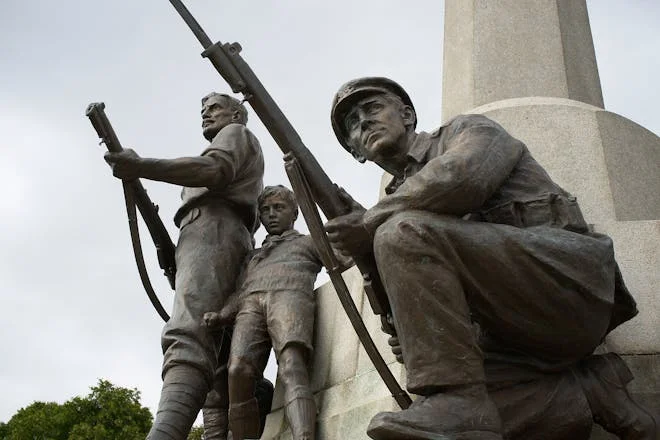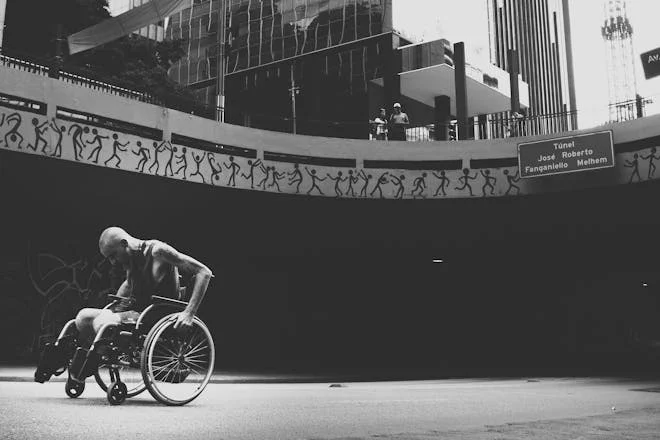“The Charge of the Light Brigade” by Alfred Lord Tennyson: A Complete Analysis
January 28, 2024 | by poemread.com
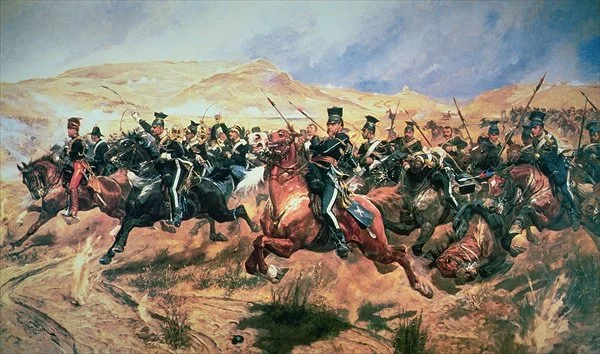
If you are looking for a poem that celebrates the courage and heroism of soldiers in the face of death, you might want to read “The Charge of the Light Brigade” by Alfred Lord Tennyson. This poem was inspired by a historical event that took place during the Crimean War, when a British cavalry unit charged against a Russian artillery position in a suicidal mission. Tennyson uses vivid imagery, repetition, and rhyme to convey the sense of glory and honor that the brave riders felt as they rode into the “valley of Death”.
The Charge of the Light Brigade Half a league, half a league, Half a league onward, All in the valley of Death Rode the six hundred. "Forward, the Light Brigade! Charge for the guns!" he said: Into the valley of Death Rode the six hundred. "Forward, the Light Brigade!" Was there a man dismay’d? Not tho’ the soldier knew Some one had blunder’d: Theirs not to make reply, Theirs not to reason why, Theirs but to do and die: Into the valley of Death Rode the six hundred. Cannon to right of them, Cannon to left of them, Cannon in front of them Volley’d and thunder’d; Storm’d at with shot and shell, Boldly they rode and well, Into the jaws of Death, Into the mouth of Hell Rode the six hundred. Flash’d all their sabres bare, Flash’d as they turn’d in air Sabring the gunners there, Charging an army, while All the world wonder’d: Plunged in the battery-smoke Right thro’ the line they broke; Cossack and Russian Reel’d from the sabre-stroke Shatter’d and sunder’d. Then they rode back, but not Not the six hundred. Cannon to right of them, Cannon to left of them, Cannon behind them Volley’d and thunder’d; Storm’d at with shot and shell, While horse and hero fell, They that had fought so well Came thro’ the jaws of Death, Back from the mouth of Hell, All that was left of them, Left of six hundred. When can their glory fade? O the wild charge they made! All the world wonder’d. Honor the charge they made! Honor the Light Brigade, Noble six hundred!
Introducing the Author: Alfred, Lord Tennyson
Alfred, Lord Tennyson, was born on August 6, 1809, in Somersby, Lincolnshire, England. He was one of the most celebrated poets of the Victorian era. Raised in a large and talented family, Tennyson showed an early affinity for poetry. His father’s death in 1831 prompted the family’s move to the rectory at Somersby, where Tennyson’s literary ambitions took root.
Tennyson’s education at Cambridge marked the beginning of his formal literary journey. There, he formed close friendships with fellow aspiring poets. Among them was Arthur Hallam, whose untimely death influenced much of Tennyson’s later work, including his renowned poem “In Memoriam.”
In 1830, Tennyson published his first collection, “Poems, Chiefly Lyrical,” which received mixed reviews. However, it laid the foundation for his reputation as a poet. Despite personal challenges with financial struggles and family responsibilities, Tennyson’s dedication to his craft persisted.
His poetry often reflects the intellectual and emotional currents of the Victorian era. His work explored themes of love, nature, and the impact of societal changes. In 1850, Tennyson became the Poet Laureate of the United Kingdom, succeeding William Wordsworth. This prestigious position affirmed his status as the nation’s poetic voice during a period of significant societal shifts.
Tennyson’s life experiences and the broader Victorian context influenced his work. However, “The Charge of the Light Brigade” is a departure from his more personal reflections. Moreover, Tennyson encapsulates a historical event with poetic brilliance as a tribute to the soldiers of the Crimean War.
Context of “The Charge of the Light Brigade” and the Historical Events Behind It
The historical events of the Crimean War served as inspiration for the poem. In fact, it focuses on the ill-fated Charge of the Light Brigade that occurred during the Battle of Balaclava on October 25, 1854.
The Crimean War was a conflict between the Russian Empire on one side and the British, French, and Ottoman Empires on the other. The Ottoman Empire, which was suffering from internal conflicts, sought British and French support in order to stop Russian expansionism.
The Light Brigade, a British cavalry unit, received a confusing and ill-fated order by British commanders to charge directly into a well-armed Russian position. Despite the obvious hazards and the lack of clear instructions, the brigade valiantly executed the charge. It resulted in a tragic and futile assault, where the brigade faced heavy artillery fire and suffered significant casualties.
Tennyson wrote the poem as a response to a report he read in The Times newspaper about the charge. He was moved by the bravery of the soldiers and the tragic consequences of a military blunder. The poem serves as a memorial to the sacrifice of the Light Brigade. Moreover, it is also criticizing the mismanagement and strategic blunders that led to their tragic fate.
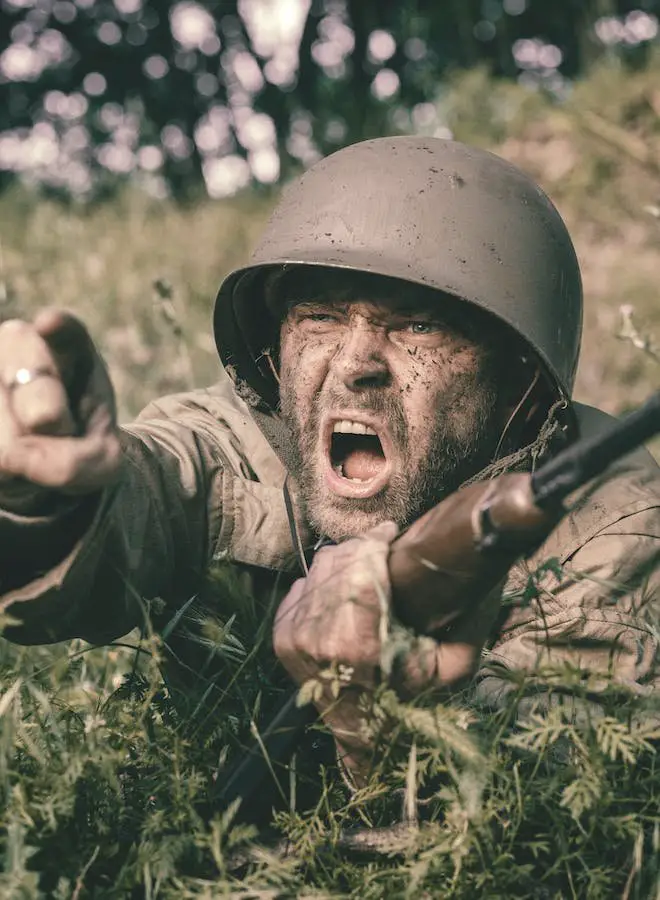
The Narrating Style and the Set of “The Charge of the Light Brigade”
The poem is written in the third person, and the narrative is observational. The speaker, although not directly involved in the events, describes the actions of the Light Brigade at the Battle of Balaclava. The use of third-person narration allows for a more objective and detached perspective. It emphasizes the broader impact and consequences of the charge.
The setting of the poem is the battlefield during the Crimean War, specifically during the Charge of the Light Brigade. The setting is vividly depicted through the poet’s descriptions of the valley, the cannons, and the relentless charge into the face of danger. The battlefield becomes a backdrop against which the tragedies of the Light Brigade are played out.
The use of the third-person perspective and the vivid portrayal of the battlefield contribute to the overall impact of the poem. Moreover, it allows readers to witness the events as if they were observers on the historical stage.
Themes of “The Charge of the Light Brigade” and Recurring Ideas
The poem explores several themes and recurring ideas, offering a reflection on war, heroism, and the human condition.
The central theme revolves around the heroism and sacrifice of the Light Brigade as they follow orders into a seemingly suicidal charge. In addition, the poem pays tribute to their courage and unwavering commitment, despite the odds.
Furthermore, the poem also explores the concept of duty and unquestioning obedience to orders, despite perilous circumstances. At the same time, the poem reflects on the consequences of poor leadership and strategic errors, emphasizing the cost of such mistakes in the context of war.
The poem serves as a historical commemoration of a specific event—the Charge of the Light Brigade during the Crimean War. Although the poem serves as a memorial to the fallen soldiers, there is an underlying theme of the futility of war and the senselessness of certain military actions.
Finally, the poem captures the tension between the romanticized notions of war and the brutal, often senseless, nature of armed conflict.
Tone of “The Charge of the Light Brigade”
The mood of the poem is initially characterized by a sense of urgency and excitement as the Light Brigade receives the command to charge into battle. There’s a palpable tension and anticipation in the air as the soldiers prepare for action. However, this mood transforms into one of somber reflection and tragedy as the consequences of the charge unfold.
In addition, the poem’s tone encompasses both patriotism and lamentation. In the initial verses, there’s a strong patriotic fervor as Tennyson celebrates the courage of the soldiers, depicting them as heroic figures. Yet, as the story progresses and the tragic aftermath of the charge is revealed, the tone transforms into one of sorrow and mourning. The repeated use of the phrase “Into the Valley of Death” intensifies a sense of impending doom and tragedy.
The attitude in the poem is marked by a mixture of admiration for the bravery and a critical view of the military blunders. While Tennyson’s attitude toward the soldiers is one of respect, there’s an undertone of critique toward the higher command for the flawed decision-making that resulted in unnecessary casualties.
The Form and Structure of “The Charge of the Light Brigade”
The poem is structured into six stanzas, each varying in length. The stanzas range from four to nine lines, and the poem follows a consistent rhythmic pattern, utilizing a combination of dactylic dimeter and dactylic trimeter.
These stanzas serve to organize the narrative into distinct sections, with each focusing on different aspects of the charge. The lines within each stanza vary in length, contributing to the poem’s dynamic flow. The shorter lines (dimeter) create a brisk pace, mirroring the swift and urgent nature of the charge. Longer lines (trimeter) provide moments of pause and reflection, allowing the reader to absorb the gravity of the events.
The shorter lines and frequent line breaks contribute to a sense of urgency and movement. The use of enjambment, where sentences and phrases continue from one line to the next without a pause, enhances the momentum, echoing the relentless advance of the Light Brigade.
The punctuation is relatively sparse, primarily using commas, periods, and exclamation points. This limited use of punctuation contributes to the poem’s fluidity and continuous rhythm. Furthermore, the lack of question marks in the famous lines “Theirs not to reason why, / Theirs but to do and die” reinforces the soldiers’ lack of agency and the inevitability of their situation.
The Rhyming Schemes of “The Charge of the Light Brigade”.
The poem employs a consistent rhyme scheme within each stanza (aaba), contributing to its musical and rhythmic quality.
The steady and predictable rhyme scheme, combined with the poem’s dactylic meter, mimics the rhythmic quality of marching of the soldiers or the galloping of horses. The musicality created by the rhyming pattern enhances the overall auditory experience, making the poem resonate with the sounds.
Stanza-by-stanza analysis of “The Charge of the Light Brigade”
Stanza I
“Half a league, half a league,
Half a league onward,
All in the valley of Death
Rode the six hundred.
“Forward, the Light Brigade!
Charge for the guns!” he said.
Into the valley of Death
Rode the six hundred.“
In the opening stanza, Tennyson sets the stage for a dramatic military advance with a rhythmic and urgent tone. The repeated use of the phrase “Half a league” creates a brisk, marching rhythm, emphasizing the rapid pace of the Light Brigade’s movement. The use of the term “league” suggests a measured distance, emphasizing that this specific act of war was predetermined and planned in advance.
“The valley of Death”, a powerful metaphor, sets the ominous backdrop for the impending conflict. It brings about impending doom for the mission. The commander’s command to “Charge for the guns!” encapsulates the directness and immediacy of military orders. The use of exclamation marks and the strong imperative tone contribute to the poem’s sense of urgency, as the six hundred soldiers boldly ride into the perilous unknown.
Stanza II
““Forward, the Light Brigade!”
Was there a man dismayed?
Not though the soldier knew
Someone had blundered.
Theirs not to make reply,
Theirs not to reason why,
Theirs but to do and die.
Into the valley of Death
Rode the six hundred.“
The second stanza implies the resolute mindset of the Light Brigade, showcasing their unwavering commitment to duty. The repeated command “Forward, the Light Brigade!” echoes the initial call to action, reinforcing the soldiers’ disciplined and obedient nature.
Tennyson introduces this irony with the line, “Was there a man dismayed?”. The poet acknowledges that the soldiers are aware that “Someone had blundered,” indicating a potential error in the command they are following.
The line “Was there a man dismayed?” is a rhetorical question about the emotional state of the soldiers. The use of the word “dismayed” implies a sense of anxiety, distress, or unease. The poet is probing whether any of the soldiers displayed these emotions upon realizing the mistake in the commands. This use of irony adds a layer of complexity to the narrative, highlighting the soldiers’ awareness of the situation while emphasizing their inability to question orders.
The triplet structure with repeated “Theirs not to” emphasizes the soldiers’ lack of agency and the stark contrast between their unquestioning obedience and the potential misjudgments of their leaders.
Stanza III
“Cannon to right of them,
Cannon to left of them,
Cannon in front of them
Volleyed and thundered;
Stormed at with shot and shell,
Boldly they rode and well,
Into the jaws of Death,
Into the mouth of hell
Rode the six hundred.“
In the third stanza, Tennyson vividly describes the chaotic and perilous nature of the charge. The use of vivid imagery, such as “Cannon to right of them, Cannon to left of them,” creates a sensory experience for the reader. The choice of prepositions— “to right of them,” “to left of them,” and “in front of”them”—creates a sense of enclosure, trapping the soldiers in a crossfire. This spatial arrangement intensifies the peril, emphasizing the soldiers’ vulnerability as they advance into the heart of the battlefield.
The phrase “Volleyed and thundered” employs onomatopoeia to evoke the auditory experience of cannon fire. The use of consonance with the repeated “d” sounds in “Volleyed and thundered” enhances the harsh quality of the chaotic scene.
The lines “Stormed at with shot and shell, Boldly they rode and well,” juxtapose the relentless storm of projectiles with the bravery and skill of the Light Brigade. Tennyson highlights the soldiers’ courage in the face of overwhelming odds, portraying them as bold and adept riders.
The metaphorical language intensifies in the lines “Into the jaws of Death, Into the mouth of hell.” These phrases convey the treacherous and life-threatening nature of the charge, with death and hell symbolizing the impending danger and chaos awaiting the soldiers. The use of metaphor adds a layer of symbolism, emphasizing the gravity of the mission undertaken by the Light Brigade.
Stanza IV
“Flashed all their sabres bare,
Flashed as they turned in air
Sabring the gunners there,
Charging an army, while
All the world wondered.
Plunged in the battery-smoke
Right through the line they broke;
Cossack and Russian
Reeled from the sabre stroke
Shattered and sundered.
Then they rode back, but not
Not the six hundred.“
The stanza begins with the powerful image of the soldiers flashing their sabres bare, turning in the air, and sabring the gunners. The use of verbs such as “flashed” and “sebring” creates a dynamic and dramatic portrayal of the fierce hand-to-hand combat. This visual imagery brings to life the chaos and intensity of the battlefield, with the sabres gleaming in the midst of the conflict.
The poet introduces a sense of wonder with the line, “Charging an army, while / All the world wondered.” This juxtaposition of the soldiers charging forward and the world watching in amazement emphasizes the audacity and recklessness of the Light Brigade’s actions. Tennyson conveys a degree of astonishment at the seemingly fearless charge, suggesting that the soldiers’ bravery is remarkable even in the face of overwhelming odds.
The poet employs enjambment effectively in the lines “Plunged in the battery-smoke / Right through the line they broke,” creating a seamless and continuous flow of the narrative. This technique enhances the sense of relentless momentum, emphasizing the soldiers’ determination to break through the enemy line despite the challenges.
The use of historical and cultural references, such as “Cossack and Russian,” adds specificity to the poem, grounding it in the context of the Crimean War. The sabre strokes shattering and sundering the enemy forces signify the fierce and decisive nature of the combat. Furthermore, it highlights the bravery and skill of the Light Brigade.
The tragic turn in the stanza is marked by the lines, “Then they rode back, but not / Not the six hundred.” Here, Tennyson poignantly conveys the heavy toll of the battle, indicating that not all the soldiers returned from the charge. The repetition of “Not” adds emphasis to the loss, creating a solemn and mournful tone. This abrupt shift in the narrative marks a moment of reflection on the sacrifice and tragedy of war
Stanza V
“Cannon to right of them,
Cannon to left of them,
Cannon behind them
Volleyed and thundered;
Stormed at with shot and shell,
While horse and hero fell.
They that had fought so well
Came through the jaws of Death,
Back from the mouth of hell,
All that was left of them,
Left of six hundred.“
The fifth stanza poignantly portrays the aftermath of the charge. The stanza opens with the repeated and echoing “Cannon to right of them, Cannon to left of them,” emphasizing the continued onslaught even after the charge has concluded. This repetition reinforces the inescapable nature of the artillery barrage, highlighting the soldiers’ vulnerability even in retreat.
The line “While horse and hero fell” succinctly captures the toll of the battle, blending both the human and equine casualties. The alliteration in “horse and hero” adds a rhythmic quality and draws attention to the shared fate of both the soldiers and their loyal steeds. The use of consonance in “fell” enhances the impact of the word, emphasizing the tragic outcome.
The lines “They that had fought so well, came through the jaws of Death, back from the mouth of hell” employ metaphors to describe the soldiers’ perilous journey. The repetition of “Came through” underscores the survivors’ resilience, having endured the chaos and danger. The imagery of coming “Back from the mouth of hell” reinforces the notion that the soldiers have returned from a nightmarish and infernal battlefield.
The poet’s choice of “All that was left of them, Left of six hundred” carries a profound sense of loss. The repetition of “Left” highlights the emptiness and stark reduction in numbers, emphasizing the severe casualties suffered by the Light Brigade. Tennyson employs brevity in these lines, heightening the impact and allowing readers to grasp the magnitude of the tragedy succinctly.
The use of enjambment in the lines “Left of six hundred” creates a seamless transition to the concluding thought. The abrupt and hurried conclusion is a potent one because it forces the reader to reflect on the cost to the soldiers and the hollowness of a victory that came at such a high price.
Stanza VI
“When can their glory fade?
O the wild charge they made!
All the world wondered.
Honour the charge they made!
Honour the Light Brigade,
Noble six hundred!“
The final shifts to a reflective and commemorative tone, contemplating the enduring legacy of the heroic charge despite the tragic losses. Alfred, Lord Tennyson employs various literary devices to convey a sense of timeless honor and recognition for the Light Brigade.
The stanza opens with a rhetorical question, “When can their glory fade?” This question reflects on the lasting impact of the Light Brigade’s valiant charge, suggesting that their glory is timeless and transcends the immediate context of the battle. Tennyson invites readers to consider the enduring nature of the soldiers’ heroic act.
The poet then exclaims, “O the wild charge they made!” The use of “wild” conveys a sense of audacity, recklessness, and unbridled courage. This choice of adjective serves to amplify the daring nature of the charge, emphasizing the soldiers’ fearlessness as they faced overwhelming odds. The exclamation mark adds an emotive touch, expressing the poet’s admiration for the boldness of the Light Brigade.
Tennyson issues a direct exhortation with the lines, “Honour the charge they made! / Honour the Light Brigade, / Noble six hundred!” This repetition of “Honour” serves as a powerful call to recognize and commemorate the bravery of the soldiers. The use of “Noble” elevates the fallen soldiers to a position of honor and nobility, emphasizing their virtues and sacrifice.
The repeated exclamation marks in these lines underscore the urgency and intensity of the poet’s plea. Tennyson’s intentional use of exclamation marks throughout the stanza adds a sense of fervor and insistence, conveying the importance of honoring the Light Brigade’s memory.
The concluding lines, “Noble six hundred!” encapsulate the final tribute to the soldiers. The numeric reference to the “six hundred” serves as a reminder of the specific individuals who participated in the charge. Tennyson’s deliberate choice to end the poem with this numerical reference leaves a lasting impression, personalizing the sacrifice and emphasizing the individuality of each soldier.
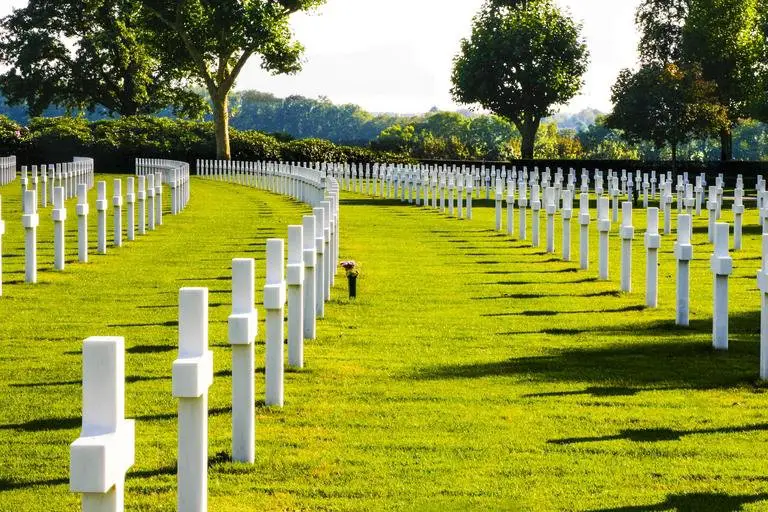
Conclusion
In this poem, the poet Alfred Lord Tennyson tells a story about a brave but tragic charge of soldiers, the Light Brigade, in a war. The emotions conveyed are a mix of pride in their courage and sadness for their losses. The tone suggests admiration for the soldiers’ bravery and a call to honor their memory. Tennyson’s intention seems to be to immortalize the courage of these soldiers and pay tribute to them.
The target audience might be people who appreciate tales of heroism and sacrifice. It feels like the poet is speaking from his own perspective, sharing his deep emotions about the bravery of the Light Brigade. Reading it makes you feel a sense of respect for the soldiers and a tinge of sorrow for the price they paid.
RELATED POSTS
View all

